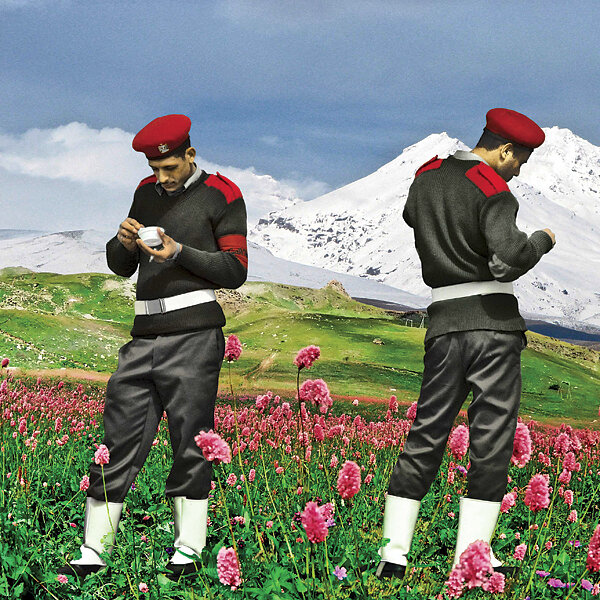New views of the Arab Spring
Loading...
Images and sounds from the Middle East wash through the news cycle with an emphasis on policy, democracy, and body count. Yet artists, too, are being swept up in these dramatic events. The issues of change and of how citizens shape their societies have produced new works from artists across the Middle East and beyond.
Marta Weiss, curator of photographs at London’s Victoria and Albert Museum, offers an example in Cairo graphic-artist-turned-photographer Nermine Hammam, who is featured in the current show “Light from the Middle East: New Photography,” along with 30 others. Ms. Hammam manipulates her photos of police in Cairo’s Tahrir Square by placing them in idyllic settings, thereby capturing the empathy some protesters felt when they looked across the barricades to see young, even frightened, police.
“To have one artist’s subjective take on it is a reminder that [the Arab Spring] is not as easy to read as the images in the news might suggest,” says Ms. Weiss.
Like Hammam, Hala Elkoussy was also in the thick of events in Cairo. The Egyptian photographer and filmmaker loaned her equipment to documentarians during the initial demonstrations. But as she attended the protests, she found herself rethinking her role and methods, and quickly produced two videos that set the topical work of young Egyptian poets to music. While the video images are inspired by what’s in the news, they have the artist’s nostalgic, color-infused, contemplative style. One video, “Mr. X,” is about the way total strangers shared life-changing experiences on Tahrir Square. The other, “The Egyptian,” shows people from all sectors of society extolling freedom and democracy. Ms. Elkoussy says that by engaging in current events, an artist can help point others to purpose – even halfway around the globe.
Jamie Laurie, co-leader of a Denver-based hip-hop band, wasn’t in Cairo, but as he flew home from a visit to countries neighboring Egypt at the time of the upheaval, he jotted lines to what would become the title track of the Flobots’ 2012 album, “Circle in the Square.”
The song, says Mr. Laurie, refers to Tahrir Square, but also to pundits who had intoned that democracy in the Middle East was impossible, like squaring a circle. Other songs explore the difficulties of building a democracy from the rubble of a dictatorship. But at the album’s heart is hope.
“We were watching people in Egypt try to seize the future of their country, to make it more humane, more just,” he says. “None of us owns any of these ideas. We can definitely remind each other, and inspire one another.”







